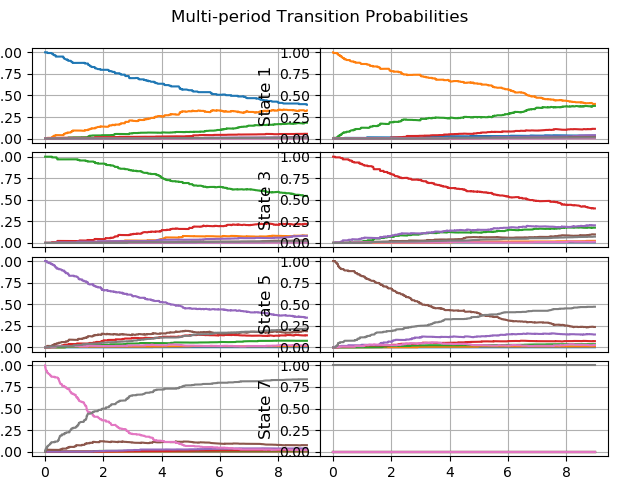Estimation¶
The estimation of a transition matrix is one of the core functionalities of transitionMatrix. Several methods and variations are available in the literature depending on aspects such as:
- The nature of the observations / data (e.g., whether temporal homogeneity is a valid assumption)
- Whether or not there are competing risk effects
- Whether or not observations have coincident values
- Treating the Right-Censorship of observations (Outcomes beyond the observation window)
- Treating the Left-Truncation of observations (Outcomes prior to the the observation window)
Estimator Types¶
- Cohort Based Methods that group observations in cohorts
- Duration (also Hazard Rate or Intensity) Based Methods that utilize the actual duration of each state
The main estimators currently implemented are as follows:
Implemented Estimators
Whichever the estimator choice, the outcome of the estimation is an Empirical Transition Matrix (or potentially a matrix set)
Implementation Notes¶
- All estimators derive from the highest level BaseEstimator class.
- Duration type estimators derive from the DurationEstimator class
Estimation Examples¶
The first example of estimating a transition matrix is covered in the Getting Started section. Here we have a few more examples:
Estimation Example 1¶
Example workflows using transitionMatrix to estimate an empirical transition matrix from duration type data. The datasets are produced using examples/generate_synthetic_data.py This example uses the Aalen-Johansen estimator
- Script: examples/python/empirical_transition_matrix.py
By setting the example variable the script covers a number of variations:
- Version 1: Credit Rating Migration example
- Version 2: Simple 2x2 Matrix for testing
- Version 3: Credit Rating Migration example with timestamps in raw date format
Plot of estimated transition probabilities

Estimation Example 2¶
Example workflows using transitionMatrix to estimate a transition matrix from data that are in duration format. The datasets are first grouped in period cohorts
- Script: examples/python/matrix_from_duration_data.py